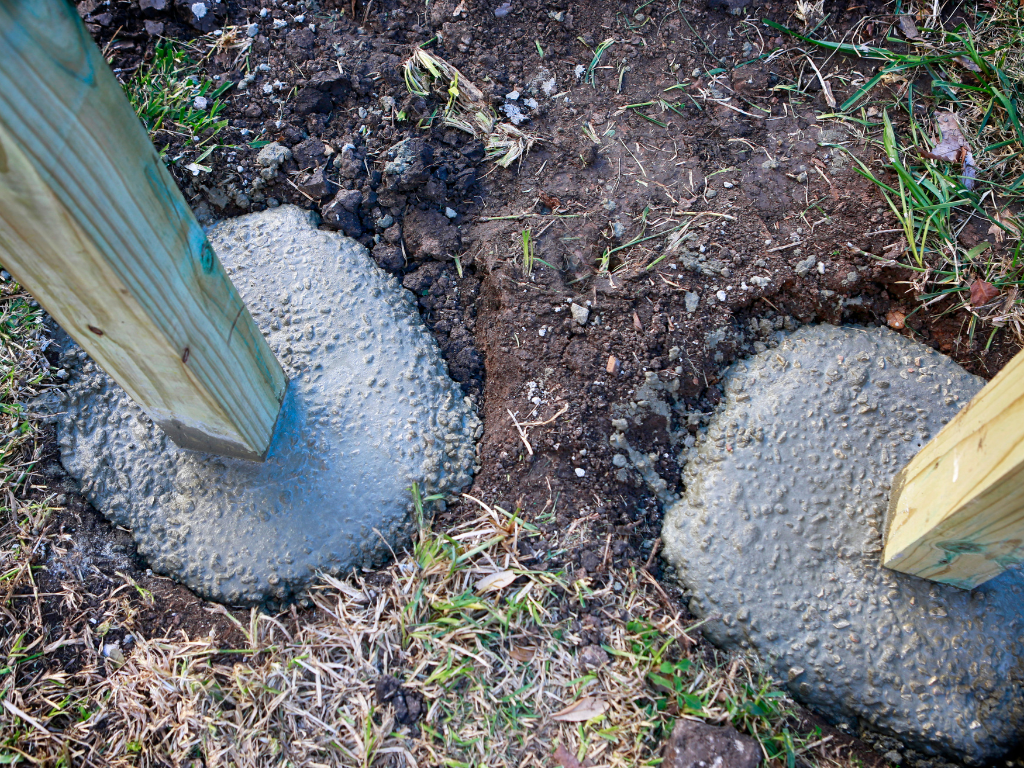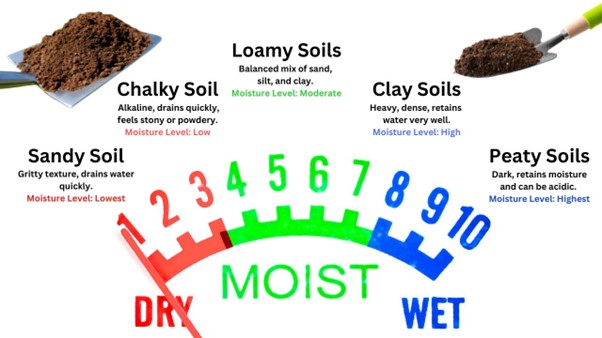
When installing a new fence, one of the most crucial considerations is the type of soil in which the posts will be set. The soil type in your garden significantly affects the decay rate of wooden fence posts, and choosing the right material can ensure your fence stands the test of time.
This self-help guide will walk you through identifying your soil type and selecting the best fence post material to match it.
Identifying Your Soil Type
Before you can choose the best fence post material, you need to determine the type of soil in your yard. Here’s how you can identify the most common soil types in Sussex:
- Clay Soils: These are heavy, dense, and retain water. In dry conditions, it becomes hard and may crack.
- Sandy Soils: Sandy soils feel gritty and don’t hold together well. They drain water quickly and feel dry to the touch.
- Loamy Soils: Loamy soil is a balanced mix of sand, silt, and clay. This soil type is generally considered ideal for gardening.
- Chalky Soils: Chalky soil contains visible white lumps of chalk or limestone. It is alkaline, drains quickly, and feels stony or powdery.
- Peaty Soils: Peaty soil is dark, rich in organic matter, and feels spongy. It retains a lot of moisture and can be acidic.

Choosing the Best Fence Post Material
Once you’ve identified your soil type, you can choose the best material for your fence posts based on the expected decay speed:
Clay Soils
Characteristics: High moisture retention and poor drainage.
Recommended Material: Concrete or metal posts. Concrete posts are extremely durable and resistant to water damage, making them ideal for wet conditions. Metal posts, such as galvanized steel, offer long-term durability and are highly resistant to decay.
Installation Tip: Consider setting posts in a concrete base to enhance stability and prevent waterlogging around the base.
Sandy Soils
Characteristics: Well-draining with low moisture retention.
Recommended Material: Redwood or pressure-treated pine posts. Redwood is naturally resistant to decay and insects, making it suitable for dry, sandy soils.
Installation Tip: Ensure the posts are buried deep enough to remain stable, as sandy soils can shift. Adding a gravel base can improve stability.
Loamy Soils
Characteristics: Balanced moisture retention and good drainage.
Recommended Material: Oak or pressure-treated pine posts. Oak is highly durable and naturally resistant to decay, making it an excellent choice for loamy soils.
Installation Tip: Loamy soil is easy to dig and work with, but adding gravel at the base of the posts can improve drainage and stability.
Chalky Soils
Characteristics: Alkaline and well-draining.
Recommended Material: Pressure-treated pine or metal posts. Pressure-treated pine is chemically treated to resist decay and insect damage, making it suitable for alkaline soils. Metal posts, like galvanized steel, are highly resistant to the alkaline environment.
Installation Tip: Use a post-hole digger to ensure a firm foundation, and consider adding soil amendments if plant growth around the fence is a concern.
Peaty Soils
Characteristics: High moisture retention and acidic.
Recommended Material: Oak or concrete posts. Oak is naturally resistant to decay and performs well in acidic, moisture-rich environments. Concrete posts are also highly durable and resistant to the conditions found in peaty soils.
Installation Tip: Install a gravel or concrete base to improve drainage and reduce direct soil contact with the wood.
Conclusion
Choosing the right fence post material based on your soil type is essential for ensuring the longevity and stability of your fence.
By identifying your soil type—whether it’s clay, sandy, loamy, chalky, or peaty—you can make informed decisions that protect your investment and keep your fence standing strong for years to come.
Always consider using pressure-treated wood for added protection, and don’t hesitate to seek professional advice for specific concerns about your soil and local climate conditions. Happy fencing!